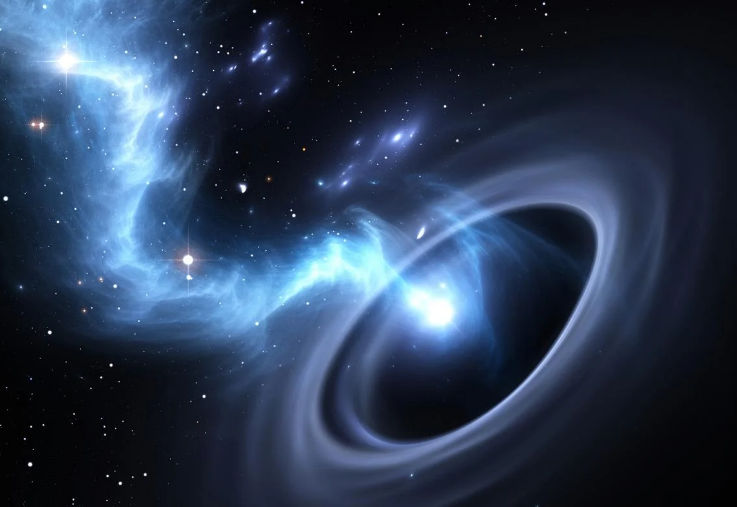Astronomers have discovered the largest stellar black hole in the Galaxy lurking nearby

Having made a record discovery, scientists have discovered the largest stellar black hole in our galaxy. Dubbed Gaia BH3, the black hole is believed to be about 33 times more massive than our Sun, making it several leagues larger than the previous record holder, Cygnus X-1, which was 21 times more massive than the Sun.
Located about 2,000 light-years away, the black hole is actually the second closest black hole to our home solar system.
Stellar black holes are a type of black hole that form from the remnants of massive stars. When a large enough star runs out of hydrogen fuel, it collapses under its own gravity, exploding as a supernova, leaving behind a massive star core. If its core is massive enough, it will collapse into a black hole, an object so dense and with such a strong gravitational attraction that even light cannot leave it.
Stellar black holes usually have a mass from 5 to several tens of times greater than the mass of our Sun. They are much smaller in mass compared to supermassive black holes, which can be millions or billions of times the mass of the Sun and are located at the centers of galaxies, including our own. So while this newly discovered black hole is the largest stellar black hole in our galaxy, it is still much smaller than the supermassive black hole Sagittarius A at the center of the Milky Way.
Gaia BH3 was discovered after astronomers analyzed data from the European Space Agency's Gaia mission and noticed a strange oscillating motion in a star located in the constellation Eagle. It turns out that this oscillation was caused by a star orbiting a black hole, Gaia BH3. Using the European Southern Observatory's Very Large Telescope (ESO's VLT) and other observatories, astronomers have tested the mass of the black hole and determined that it is a staggering 33 times the mass of the Sun.
Most other stellar black holes in our galaxy do not exceed 10 times the mass of our Sun, making Gaia BH3 a rare find.
"No one expected to find a massive black hole lurking nearby that has not yet been discovered. This is a once-in-a-lifetime discovery," study author Pasquale Panuzzo, an astronomer at the Paris Observatory, which is part of the Paris Observatory, said in a statement. French National Center for Scientific Research (CNRS).
Metal-poor stars, composed mostly of hydrogen and helium with minimal heavier elements, are thought to retain more mass throughout their lives, potentially leaving behind enough material to form more massive black holes after they die. However, there has been no direct evidence linking stars with a low metal content to the formation of massive black holes.
Much more data is being collected about this black hole and its star, but it won't be fully published until 2025.
"We have taken the exceptional step of publishing this paper based on preliminary data ahead of the upcoming release of Gaia because of the unique nature of the discovery," paper co-author Élisabeth Caffau, a researcher at the CNRS observatory of Paris, said in a statement.
Source